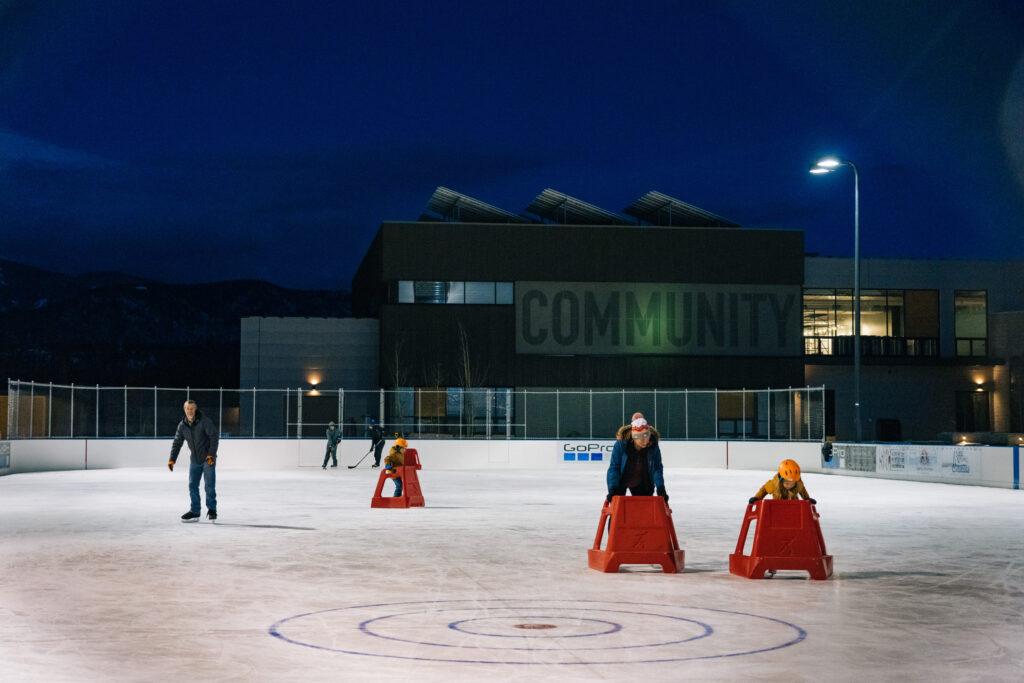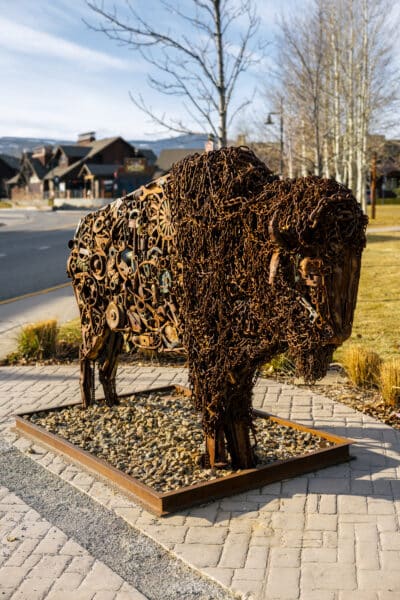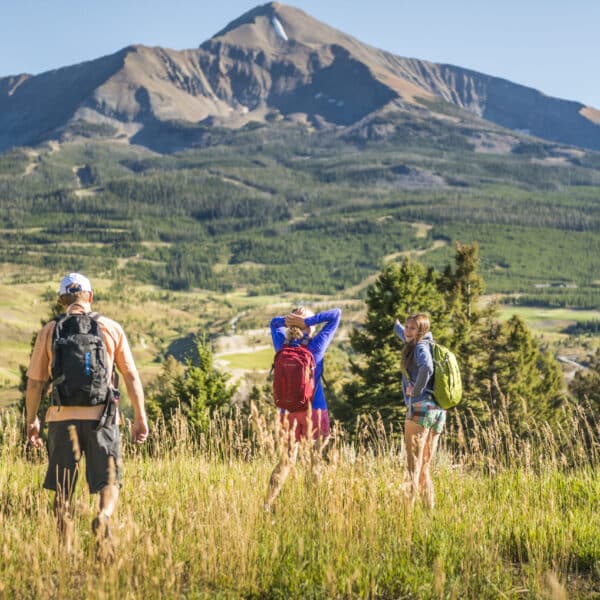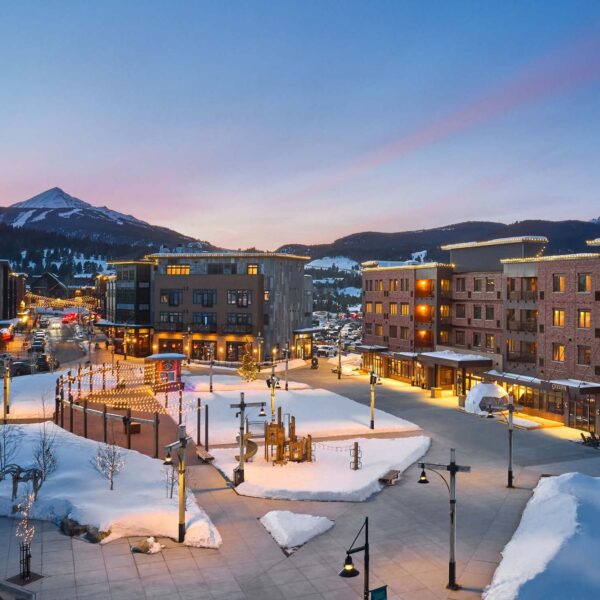Big Sky, Montana

Giving Back to Move Forward
How Big Sky is tackling growth.
Still a relatively new place, Big Sky Resort
was founded in the early 1970s by famed NBC broadcast newsman Chet Huntley and purchased by Boyne Resorts in 1976 after Huntley’s untimely death. It was a pretty quiet ski area until the Lone Peak Tram was installed in 1995. Beyond a bit of seasonal work bumping chairs or teaching skiing, there weren’t enough jobs to create an employee housing crisis. In the early 2000s, new development projects sprung up around Big Sky Resort including the Yellowstone Club, Spanish Peaks, and Moonlight Basin, but the financial crisis of the late 2000s slowed growth considerably in the area for a time.
As is the nature of things, Big Sky was “found”—slowly, and then seemingly all at once. Stable ownership of the larger development projects created accelerated demand for the area. Winter visitation was further accelerated by Big Sky Resort’s popularity with IKON passholders and the resort’s significant investments in lift infrastructure as part of the Big Sky 2025 vision. Today, Big Sky resides amongst the pantheon of North American destination ski resorts alongside Jackson Hole, Aspen, Vail, and Whistler Blackcomb. And Big Sky is no longer just a ski town. In summer, nearby Yellowstone National Park has seen annual visitor increases top 10 percent over the past five years. There’s nothing quite like this region in North America—and that’s no longer a secret. The demand for visitation has impacted the local housing market, with over 1,000 units having been converted from employee and community housing to short-term rental housing over the last four years.
While Big Sky has a “Town Center,” it is not a town. Big Sky is still an unincorporated area straddling two different counties, creating both unique challenges and opportunities for addressing local issues. Big Sky isn’t immune to the struggles facing other mountain towns and ski resorts of North America, including housing, environmental and other community concerns. But challenges can also be seen as opportunities. And nowhere is that more true than in Big Sky, which still has time to shape its future.
In late 2019, community members and leaders throughout Big Sky came together with funding from the Big Sky Resort Area District (BSRAD) to draft “Our Big Sky,” the community vision and strategy for articulating the needs and priorities of the community’s growth —focusing on “Our People, Our Character, Our Recreation, and Our Natural Environment.”

Art For The People
How Big Sky Became an Arts Destination. “We could be life every other resort town, but we don’t have to be.” -Katie Alvin, Development Director of the Arts Council of Big Sky In a mountain town like Big Sky, our attention is typically drawn to athleticism—skiing, biking, running, boating—or the natural world—summits bathed in alpenglow, […]

Ski resorts are expanding summer activities; here are 7 that are year-round destinations
After the snow melts, hiking, biking, horseback riding, zip lining, concerts and outdoor summer fun await at ski resorts in the summer season. Many U.S. ski resorts are investing in warm-weather programs and activities to make them year-round destinations. “Although summer recreation at ski resorts isn’t necessarily a new trend, all ski resorts are seeing a boom in […]

The Future of Big Sky
Lone Mountain Land Company’s Matt Kidd sat down to discuss the difference between development and nurtured growth, capacity and sustainability, and maintaining a sense of place while supporting the economy. When it comes to the Big Sky community, there’s good news, tough news, and inarguable news. The inarguable news first: The word is out. Big […]